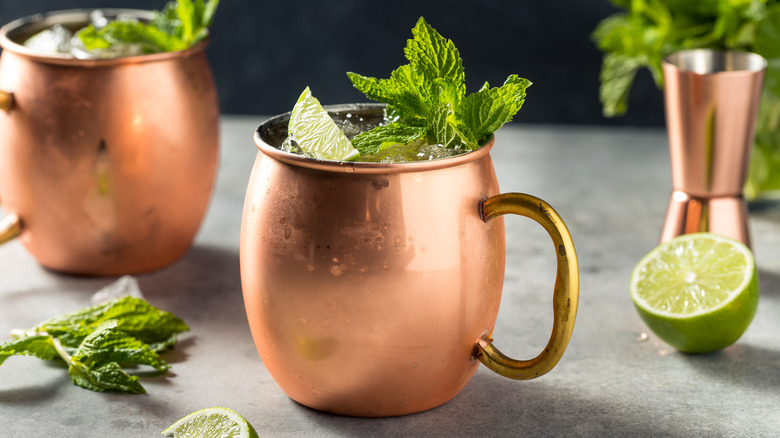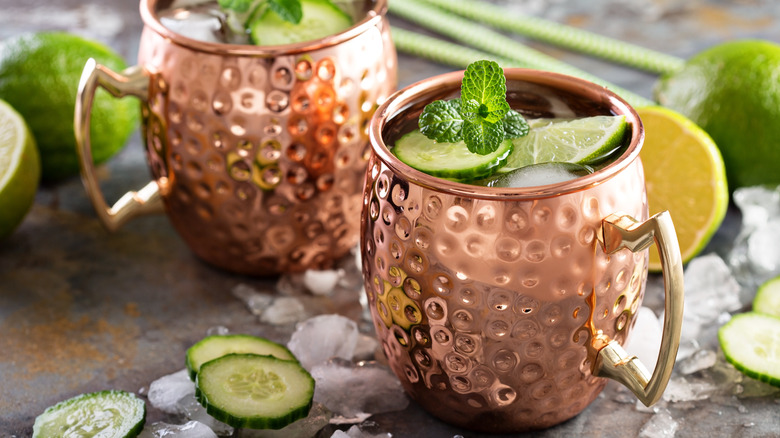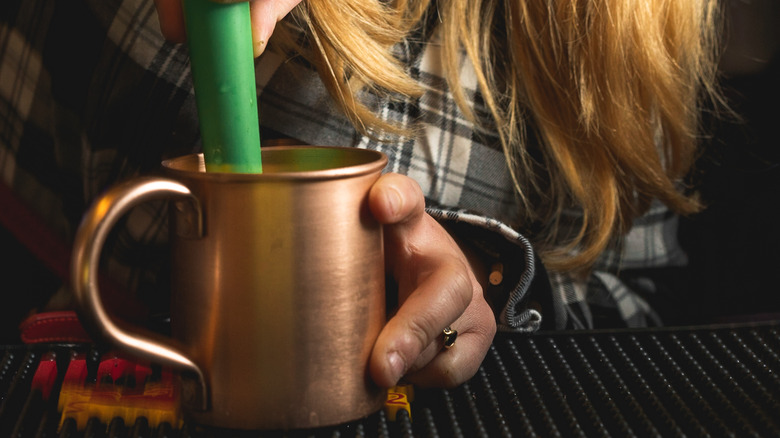What Bartenders Want You To Remember When Ordering A Mule
Ordering a cocktail is more of an art than you think. Of course, the type of cocktail or liquor is essential, but it's only the first step. Do you want your whiskey on the rocks or neat? Do you want your martini dry, dirty, or something else?
Cocktails are hardly straightforward, though we often make them out to be, because certain drinks have become such standard practice that we assume there is only one variety of such libation. The mule, in this case, is the perfect exception.
Most people think of a Moscow Mule when they think of this ginger beer and lime drink, but while all Moscows are mules, not all mules are Moscows. The concept of the Moscow Mule actually originated in the United States in the 1940s, and its name comes from vodka being labeled a Russian spirit. When ordering a mule at a cocktail bar, there is one crucial thing to know about the drink before deciding whether you want it.
Mules can also be made with gin
The most significant rule of thumb when ordering a mule: you aren't limited to just the Moscow version. Regarding a mule's profile, vodka is not what distinguishes it from other drinks. Rather, it's the combination of ginger beer and lime.
It's perfectly acceptable to order a mule sans vodka. Gin, ginger beer, and lime is another popular combination, appropriately called a gin mule. Although the mule was traditionally created with vodka, many have found gin to be softer on the taste buds than vodka. It became a popular type of alcohol to serve with ginger beer and lime because of its botanical undertones. You might also see a gin mule labeled a London Mule or a Foghorn.
Next time you walk up to a bar with the intention of ordering a mule, make sure you specify which type you prefer. Bartenders want you to remember that both types are common, and they can't read your mind.
Why are mules served in copper mugs?
Of course, the final element that makes a Mule (and any twists on the drink) its true self is that it's served in a copper mug. Though this isn't guaranteed to be the case, any bar worth its weight will almost certainly follow this practice.
There are a few reasons: Appearance, temperature, and taste. The mule's copper mug gives it a distinctiveness in the cocktail world — similar to how we recognize a martini or a whiskey drink. Beyond that, copper also works scientifically to keep the drink colder using conduction; it keeps the cold from the ice in the cup and doesn't bring in warmth from the air, keeping the drink colder for longer. And finally, the copper material actually heightens the drink's flavor in a way that glass wouldn't; copper oxidizes the vodka, bringing a flavor profile that a standard cocktail glass could not. The material also balances the carbonation from the ginger beer and the acidity from the lime juice. Though you can still enjoy a mule sans copper, it's worth investing in a couple of copper mugs if you plan to enjoy the drink at home.


